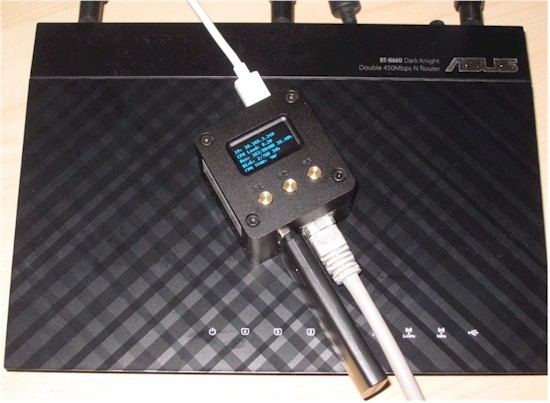
Read on SmallNetBuilder

Tim, what a great article, of course ordered the Neo2 Nano Pi immediately. And thanks to sfx2000, above, for the tip to go to one gigabyte of RAM.Think Wi-Fi analyzers that can show network activity are expensive? Here's how to build one for well under $100.Read on SmallNetBuilder
Wonder how close this thing is to being usable as a $55 dollar OpenVPN (with AES encryption) or IPSec appliance. Using either a $15 dollar Tenda SG105 five-port gigabit switch, or a $20 dollar 802.11ac USB WiFi adapter, to get data both in and out.
I have found that the Realtek based adapters don't provide reliable information when used with Kismet, which I'll cover in the next article.I need a weekend project so think I'm going to order the parts and build this.
Only thing that sucks is CF-912AC USB AC1200 adapter is not available to be shipped to Canada so will have to look for something different.
I have found that the Realtek based adapters don't provide reliable information when used with Kismet, which I'll cover in the next article.
I updated the article yesterday with a new recommendation for adapters to use.
The Alfa AWUS051NHv2 does not seem to be readily available. Do you have another low cost choice that works? Does it matter if it does not have wireless AC?I have found that the Realtek based adapters don't provide reliable information when used with Kismet, which I'll cover in the next article.
I updated the article yesterday with a new recommendation for adapters to use.
Any adapter supporting the Ralink RT3572 chip should work. I ordered and tried an ASUS USB-N53 adapter, which works. There is only one version of it, so you won't get messed up by ordering a different version with a different chipset.
No. It uses the RTL8812AU chipset, which produces flaky results. At this point, you need to use an N adapter to get reliable results in monitor mode.Would the Asus USB-AC56 be a good choice also?
https://www.amazon.com/gp/product/B00FB45USW/?tag=snbforums-20
No. It uses the RTL8812AU chipset, which produces flaky results. At this point, you need to use an N adapter to get reliable results in monitor mode.
No. Not all AC Wi-Fi adapters use that chipset. But those that do, do not produce reliable results in monitor mode, at least not from what I can see in Kismet.So all the AC models are no good because they use RTL8812AU chipset got it.
No. It uses the RTL8812AU chipset, which produces flaky results. At this point, you need to use an N adapter to get reliable results in monitor mode.
If you find an AC adapter that works well, please let us all know.
Doesn't Kismet take care of this by taking control of the Wi-Fi interface?I should add that with Kismet - make sure that the monitor interface is not associated with any AP, as that will produce spurious results in the packet captures.

Welcome To SNBForums
SNBForums is a community for anyone who wants to learn about or discuss the latest in wireless routers, network storage and the ins and outs of building and maintaining a small network.
If you'd like to post a question, simply register and have at it!
While you're at it, please check out SmallNetBuilder for product reviews and our famous Router Charts, Ranker and plenty more!
